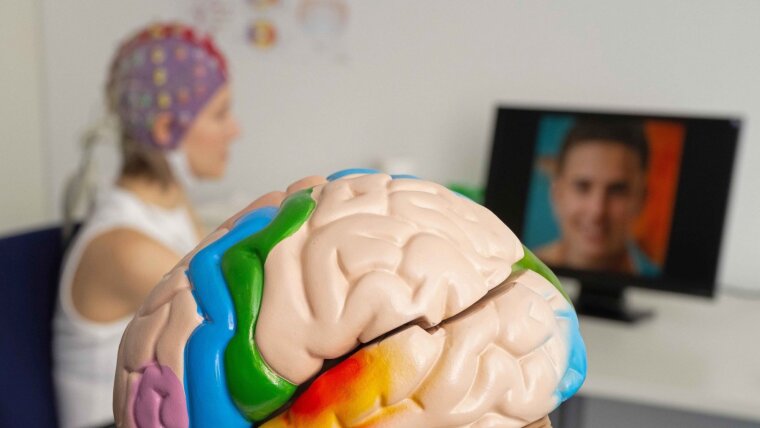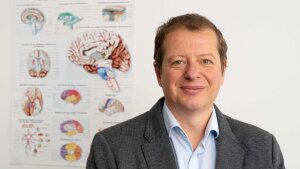
Neuroscientist and head of the study Prof. Dr Gyula Kovács.
Image: Jens Meyer (University of Jena)By Ute Schönfelder
Recognizing and remembering faces has been essential to the survival of human beings ever since the emergence of our species. As babies, we already recognize familiar individuals and get to know more people throughout our lives. Recognizing our kin, knowing who means us well and who does not—these skills help us in our personal relationships and strengthen the social fabric, today as in the past. An adult will have got to know an average of 5,000 faces and will be able to distinguish them from unknown individuals.
»In spite of intensive research, we still know little about how the neuronal representations develop in the brain when someone becomes familiar to us,« says Prof. Dr. Gyula Kovács. To understand these processes better, the neuroscientists Prof. Kovács and Dr. Géza Gergely and their team conducted EEG experiments. For this purpose, they divided participants into three groups.
One group was shown photographs of celebrities unknown to the participants. The second group watched a television programme with actors they did not know. The third group talked in person to two members of the lab. The researchers recorded the brain activity of the participants while they were looking at the photos of celebrities, watching the actors on television or interacting with the lab members.
It takes us less than half a second to know whether or not we know a face
The EEG studies published in the »Journal of Neuroscience« provided important clues as to how representations in the brain change when we get to know a face. provided important clues as to how representations in the brain change when we get to know a face. After only about 400 milliseconds—less than half a second—there is measurable brain activity over the right temporal cortex, a sign that faces are perceived as »familiar«.
However, the extent of familiarity (the amplitude of the signal) depended on the way in which the participants learned the faces. It could be seen particularly strongly after personal contacts, weaker following the television programme, and not measurable after participants had looked at photos.
Familiarity through personal encounter
»When we see a person’s face, we often know immediately whether or not we have seen it before,« says Prof. Kovács, explaining the results. »Our experiments show that this feeling of familiarity is imprinted in an especially strong and lasting fashion after personal encounters.« So if we really want to get to know each other, we have to meet in person.
Original publication:
Ambrus GG et al. Getting to know you: emerging neural representations during face familiarization, Journal of Neuroscience (2021), https://doi.org/10.1523/JNEUROSCI.2466-20.2021External link
